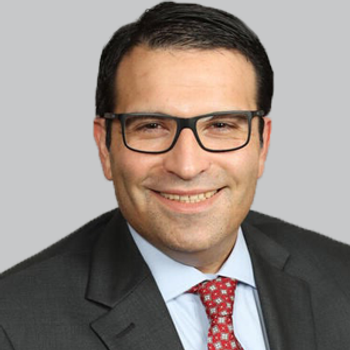
Insights on the EMBOLISE Trial and Advancing Treatment for Subdural Hematoma: Jason M. Davies, MD, PhD
The assistant professor of neurosurgery and biomedical informatics at the State University of New York at Buffalo provided commentary on the significant findings from the EMBOLISE trial presented at the 2024 International Stroke Conference. [WATCH TIME: 4 minutes]
WATCH TIME: 4 minutes
"We’re worried about reflux to what we call the geniculate ganglion that can cause facial palsies. Being able to see is key to being able to do this safely. Onyx is highly visible, it’s easy to control where it goes because it flows like lava. You can start and stop without having to start all over again to get a new catheter as is the case with some devices."
Subacute and chronic subdural hematoma (SDH) is amongst the most common neurosurgical conditions, with rates that are expected to grow as the population ages. The most common complaint for these blood clots is headache, seen in up to 80% of patients. Other symptoms include lethargy, memory impairment, confusion, weakness, nausea, vomiting, impaired vision, and seizures. SDH commonly recur after surgical evaluation, at a rate of 2% to 37%. Risk factors for recurrence can be patient related, radiologic, or surgical.
EMBOLISE, a multicenter, prospective, randomized interventional trial, was conducted to evaluate the safety and effectiveness of the Onyx Liquid Embolic System (LES) embolization of the middle meningeal artery (MMA) as an adjunct to conventional treatment for symptomatic subacute or chronic SDH. The study includes 400 patients across 39 US centers to assess the rate of hematoma recurrence/progression requiring surgical drainage and composite functional decline within 90 days post-treatment. Patients in the study were randomly assigned 1:1 to either surgery alone or surgery with adjunctive MMA embolization, with follow-up still ongoing.
At the
REFERENCE
1. Knopman J, Davies JM, Harbaugh RE, et al. The EMBOLISE study: embolization of the middle meningeal artery with Onyx Liquid Embolic System in the treatment of subacute and chronic subdural hematoma. Presented at: International Stroke Conference; February 7-9, 2024; Phoenix, AZ. LB28
Newsletter
Keep your finger on the pulse of neurology—subscribe to NeurologyLive for expert interviews, new data, and breakthrough treatment updates.


































